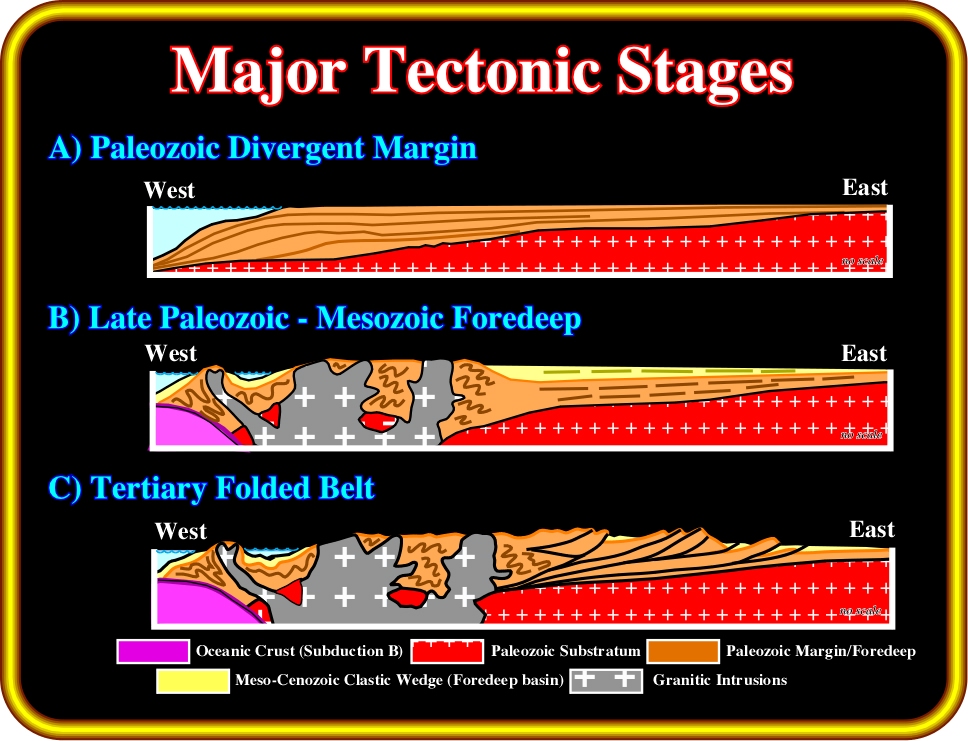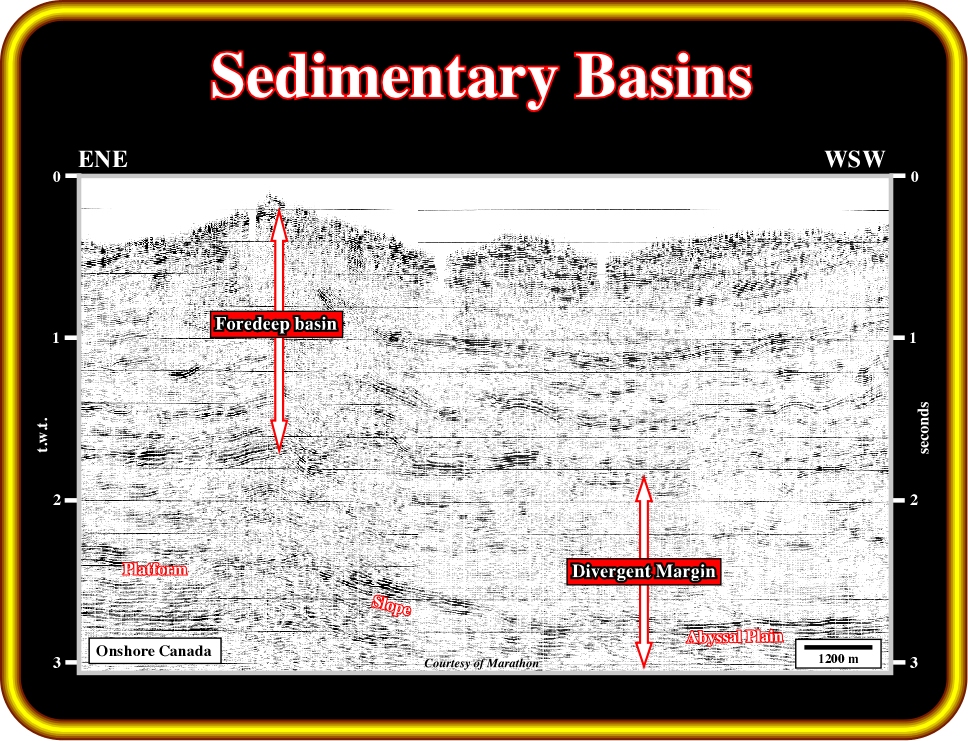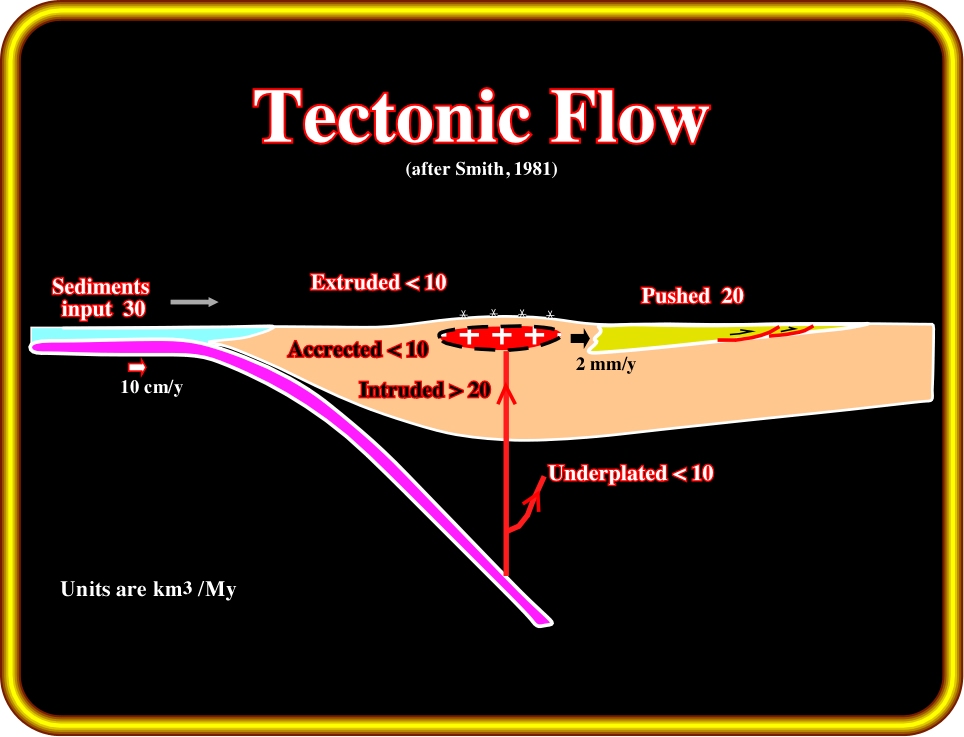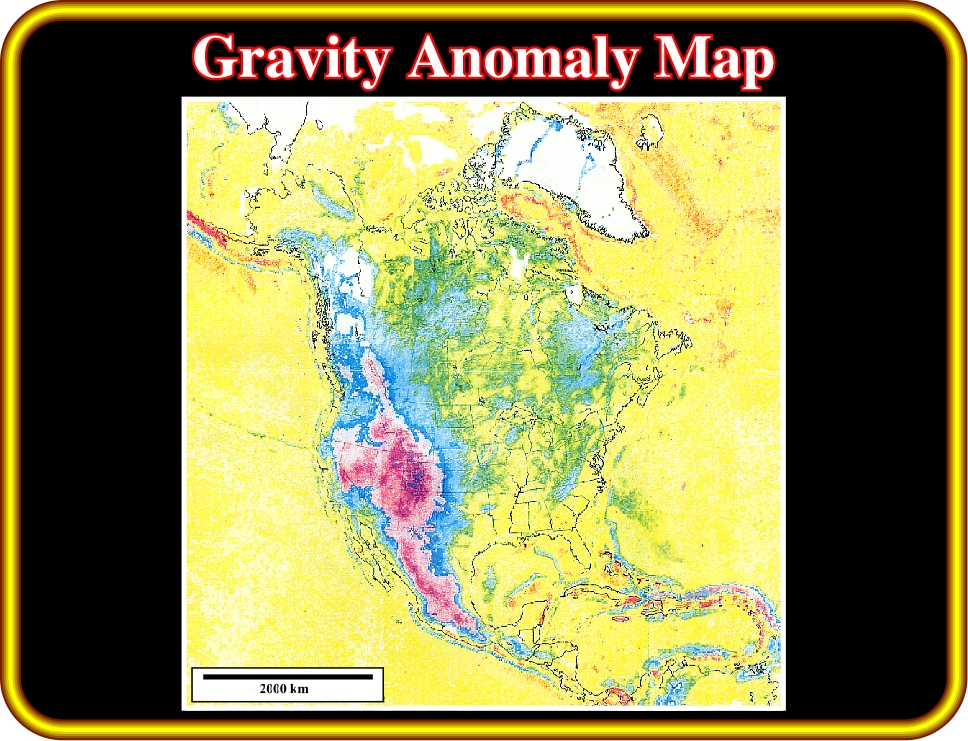
Universidade Fernando Pessoa
Porto, Portugal

Geological Setting & Seismic Interpretation

Plate 4 - The evolution of the Southern Canadian Rocky Mountains can be summarized in three main stages: (i) a Paleozoic divergent margin, (ii) a Late Paleozoic - Mesozoic foredeep, and (iii) a Tertiary Folded Belt. All stages are associated with the formation of megasutures, mainly with the Meso-Cenozoic megasuture, which, in this area of the world, is limited by a Benioff and an Ampferer subduction zone (locally, a transformant limit is possible). The geological evolution of the area of interest is a consequence of the development of an A-type subduction zone. On this sketch, the granitic intrusions are synchronous with the sedimentary shortening. Presently, the majority of geologists think they post-date the deformation and their emplacement is contemporaneous with the morphorogenic uplift (see later).

Plate 5- On this seismic line of British Columbia, it is easy to see, if you know the geological setting of the area, the vertical superposition of two sedimentary basins. The lower one corresponds to a Paleozoic divergent continental margin, where the limit between the shelf and the slope environments is emphasized by a reef-margin. The upper basin is a foredeep basin which starts probably at Mississippian.

Plate 6- Generally, thrust movements are directly associated with the collision of plate boundaries, as in Taiwan, the Andes or the Appalachians. However, in the Canadian Rockies, several geologists though that the thrust have developed at the same time as the emplacement of the major granitic batholiths. In 1981, Smith suggested that it was difficult to envisage the transmission of the stresses, which developed as the result of plate boundary collision, through the liquid magmatic welt of the batholiths. To obviate this problem, he proposed that the emplacement of the granite intrusions, which went to form the batholith, were themselves responsible for the development of the overthrusts. As illustrated above, Smith’s hypothesis is not refuted by the volume of the thrust wedges and the batholithic material emplaced, when combined with the rates of accretion. However, such a hypothesis is refuted by the metamorphism and the Oligocene morphorogenic uplift. Indeed, presently, the majority of geologists believe that the granitic intrusions post-date to thrusting. Their emplacement seems to be associated with the regional uplift of Western North America as shown in the gravity anomaly map of North America (next plate).

Plate 7 - The post-Oligocene uplift of the American plate is clearly suggested by the gravity anomaly map of North America illustrated in this figure. It is interesting to note that such an uplift is responsible for the post Oligocene terrigenous influx in the Gulf of Mexico.